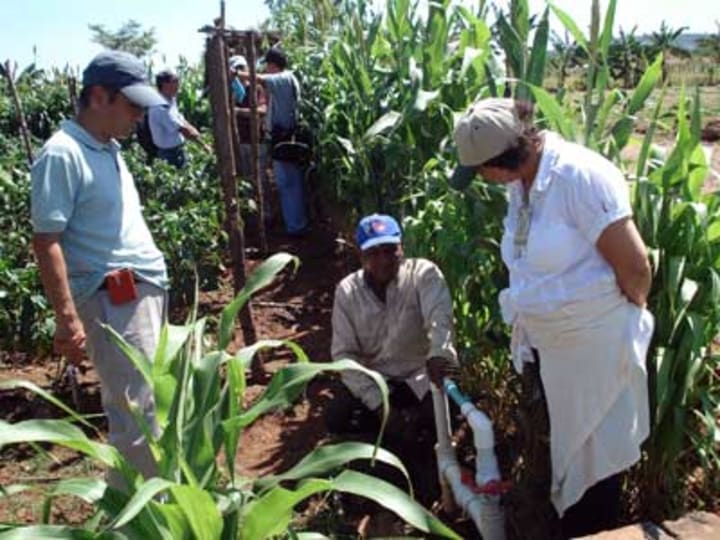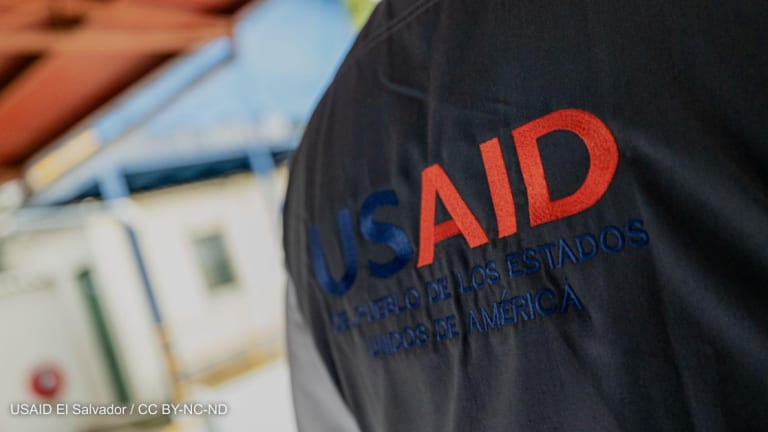
Projects funded by the Japan International Cooperation Agency rely heavily on Japanese consultants. But this does not mean that the agency is not open to partnerships with local and international organizations.
JICA’s official development assistance loan contracts are, in fact, subject to international competitive bidding, thus open to contractors regardless of nationality.
For ODA grants, JICA sometimes opts to collaborate with local groups.
“Before, the grant assistance projects required that Japanese consultants or contractors must be hired; there were no exceptions,” said JICA Deputy Director General for Latin America and the Caribbean Hideyuki Maruoka. “But now … for certain components, we work with local organizations.”
Presence in Latin America
Although JICA has traditionally focused on development in Asia, it operates hundreds of development and technical assistance projects throughout Latin America. For fiscal year 2008, JICA committed about $728 million to back 330 ODA grants and loans and technical cooperation projects.
It is also ubiquitous in the region. JICA has 23 country offices - from Mexico to Argentina - that house both Japanese and local staff.
According to Maruoka, JICA is increasingly looking to collaborate with local and international public and private organizations in the region.
“Japan is very far from Latin America and there are cultural differences, so we need local knowledge,” Maruoka said. “Adaptation to local circumstances is indispensable.”
Climate, infrastructure and poverty
In Latin America, JICA focuses on three major development sectors: climate change and the environment; infrastructure development for sustainable economic growth; and poverty reduction.
Maruoka said the emphasis on climate change reflects the Japanese government’s focus on addressing the country’s environmental issues. In the region, the agency promotes the use of alternative energy including solar, geothermal and hydroelectric power. It also helps recover and protect threatened natural resources such as the Andean glaciers and the Amazon tropical forest.
The Japanese bilateral aid agency likewise provides funds to upgrade road networks, build bridges, and support small and medium-sized businesses.
Maruoka said JICA’s poverty reduction projects offer the most opportunity for local collaboration. These may involve supporting entrepreneurship among women and sustainable agricultural development.
“For poverty reduction, local knowledge is more important than infrastructure,” Maruoka said. “For climate change, in certain cases, we may work with NGOs that support” rural electrification through renewable energy sources.
Shifting regional focus
JICA mirrors the work of many development organizations in the region: It concentrates on Central American and Andean nations.
Maruoka said such focus will intensify as JICA reduces its presence in more developed Latin American nations such as Chile, Argentina and Mexico, and shifts additional resources to more needy nations such as Haiti and Central American states.
Regionwide, JICA maintains a staff of about 400. Around 65 percent of them are nationals where the agency’s country offices are based.
Although major Latin American projects are still handled by JICA’s Latin American department in Tokyo, local country offices manage technical cooperation projects on a day-to-day basis, and have some leeway in managing procurement. In particular, JICA’s nine “overseas offices” handle more of the local procurement of contractors than other Latin America country offices. They are located in Argentina, Bolivia, Brazil, the Dominican Republic, El Salvador, Honduras, Mexico, Paraguay and Peru.
Contracting with JICA
JICA has three primary development aid vehicles in Latin America: technical assistance, ODA grants, and loans. All these projects are based on government-to-government relationships.
Of the three aid delivery vehicles, technical assistance projects are the most numerous. They account for 260 of JICA’s 330 projects in the region.
Technical cooperation projects tend to be smaller than JICA’s ODA grant and loan programs. The budget of technical cooperation projects ranges from $30,000 to $5 million.
Technical assistance projects employ almost exclusively Japanese contractors, although, in recent years, JICA has hired a few Latin American consultants that have experience working with Japanese organizations.
JICA’s ODA grant projects are managed through local governments and are also largely contracted to Japanese civil works companies and consultants. But in some cases, these projects will hire local contractors to reduce project costs.
He said identifying local opportunities can be as simple as keeping an eye on the local newspaper for JICA-related procurements, or inquiring directly at the JICA country office.
The best opportunity for local contractors to work with JICA is through loan projects. These projects are also JICA’s largest category of aid program in Latin America. For fiscal year 2008, JICA operated 22 loan projects in Latin America, with budgets ranging from $30 million to $250 million.
Because loan projects are contracted by host governments through international competitive bidding, they include many local and foreign contractors, according to Maruoka.
Decentralization benefits local partners
Guillermo León is one of JICA’s local partners in Lima, Peru. With the support of the agency and other international donors, León, who is the secretary of the national water and sewage program, aims to provide potable water and sewage system coverage to all of Lima’s 8.5 million residents by 2011.
León has worked with JICA since 2001. He said JICA investments in the country have fluctuated since the 1990s, but they have been a major source of finance for Peru’s infrastructure development.
“In terms of sanitation, they are one of our principle partners,” Leónlo said.
León cited JICA’s favorable loan conditions as one of the main advantages of working with the Japanese agency.
“Certainly, the finance conditions are very competitive, compared to other donors,” León said.
For his projects, León said JICA has offered 40-year loans with a 10-year grace period and interest rates of less than 1 percent annually.
JICA’s process of decentralizing its decision-making, he added, lightened the bureaucratic load for local partners.
“Before, decisions were strictly made in Tokyo,” León said. “More decisions are now made in the JICA Lima office, and that saves us time and [reduces administrative transactions].”
JICA’s combination of favorable finance terms and expert technical support also aim to ensure that its investments have impacts that last, León said.
“A lot of our investments throughout the country will not be sustainable unless local capacity is raised,” he said. “It’s not just a matter of money.”
Local contractors need to take initiative
JICA has few formal mechanisms for direct collaboration with Latin American NGOs. But Maruoka said informal contacts and dialogue can lead to partnerships.
“In order to formulate new projects, input from local organizations is important,” Maruoka said. “We would like to hear more from local organizations.”
He also said that if a local organization generates a proposal that JICA likes, the organization could be integrated into any project that is developed from the proposal.
León also noted that although most projects are generated through government-to-government contacts, JICA is “always identifying and creating alliances with organizations that have applicable skills.”
JICA’s interest in working with local organizations is not limited to development NGOs or government agencies. Latin American business enterprises and universities with relevant knowledge and skills are also invited to approach JICA with ideas.
Maruoka’s advice to such groups: Contact JICA’s local offices. He said these bureaus serve as natural conduits for local Latin American organizations and the JICA bureaucracy.




